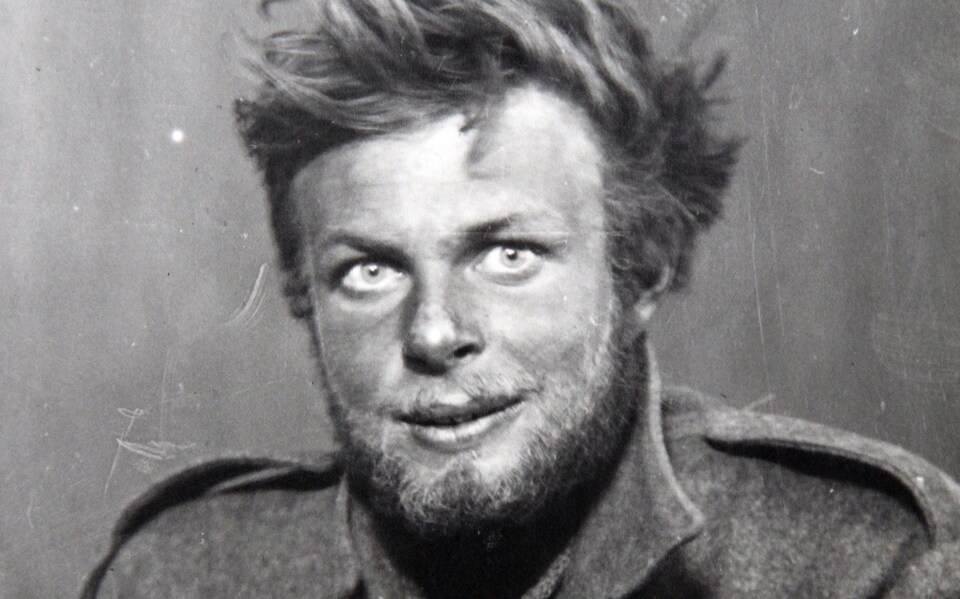
Mike Sadler, The Last Member of the Original S.A.S, Dies at 103
[ad_1]

Maj. Mike Sadler, one of the first recruits and the last surviving member of Britain’s Special Air Service (S.A.S.), died on Thursday in Cambridge, England. He was 103.
Dubbed a human GPS by the New York Times, Sadler served in the Long Range Desert Group (LRDG), an elite reconnaissance unit prized by the British for its prowess at deep desert exploration and infiltration of enemy-held wilderness.
As the key navigator within the LRDG, it was Sadler’s duty to guide the commandos — including the likes of Robert Blair “Paddy” Mayne — as they “crept onto Nazi airfields; attached time bombs to Messerschmitt fighters, Stuka dive bombers, fuel dumps and pilot quarters; then sped away as explosions roared behind,” writes the NYT.
But unlike his daredevilish comrades, Sadler might not have even fired a single shot at the enemy while fighting in the North African desert.
Sadler arrived on the African continent in 1941 as an antitank gunner, but after a chance meeting with LRDG recruits in a Cairo bar while on leave, Sadler quickly joined the budding detachment.
Although, as Sadler puts it, he was never actually asked if he wanted to join the S.A.S., according to the BBC History Magazine.
“All I knew,” Sadler quipped, “was that [S.A.S. commander] David Stirling decided he wanted me — and somehow he got me.”
Sadler became interested in celestial navigation and, within several weeks, learned how to use a theodolite, a tool used by surveyors to measure horizontal and vertical angles, as well as how to read celestial charts to accurately cross hundreds of miles amid the desert’s shifting sands and featureless landscapes.
“I was so tickled by the idea of being able to find where you were by looking at the stars,” Sadler later told the BBC History Magazine.
“Desert navigation, like its equivalent at sea, is largely a matter of mathematics and observation, but the good navigator also relies on art, hunch and instinct,” author Ben Macintyre wrote in “Rogue Heroes”. “Sadler had uncanny, almost unerring ability to know where he was, where he was going, and when he would get there.”
Sadler, however, demurred over that fact, stating that he tried to never let his gut overrule his observations while navigating.
“You have to be confident because it was awfully easy, especially at night, to start feeling you’re going wrong and you should be further to left or right,” he told historian Gavin Mortimer. “It was rather easy to give way to that feeling if you weren’t confident.”
Yet time and time again, Sadler delivered his men to their targets — and got them out again.
“Without him,” the New York Times reports, “the commandos could not have crossed hundreds of miles of desert, found enemy bases on the Mediterranean Coast, destroyed more than 325 aircraft, blown up ammunition and supply dumps, killed hundreds of German and Italian soldiers and pilots, or found their way back to hidden bases.”
The S.A.S. became well-known for their hit-and-run strike attacks — striking deep into Nazi-held territory and then disappearing just as swiftly as they had arrived.
After leaving the desert war in 1943, Sadler was posted to an S.A.S. training center in Scotland before parachuting in France in 1944 after the D-Day invasion to aid in sabotage operations. He retired from the war as a major.
According to the Washington Post, Sadler later joined the British Foreign Office, working in intelligence during the Cold War. He declined to publicly discuss his duties.
Like many of the rogue heroes that surrounded him, Sadler wasn’t initially suited for the strait-laced Army life. Before joining the S.A.S., Sadler voluntarily gave up his sergeant rank rather than apologize over his objection that soldiers keep their boots on in their sleeping bags.
“I wasn’t at all keen on the extreme aspects of militarism, marching up and down,” Sadler later recalled. “Although I did my best to be reasonably smart.”
Among the S.A.S., he had found like-minded people.
“Nowadays the SAS has a fearsome reputation,” Sadler wrote in the foreword of Joshua Levine’s “SAS: The Illustrated History of the SAS”, “but I don’t remember ever wanting to kill anybody.”
[ad_2]
Source link


